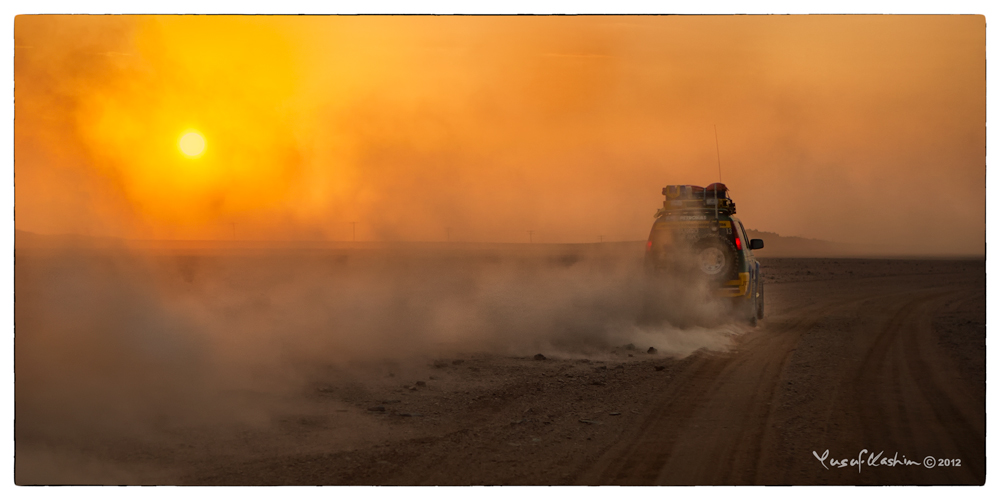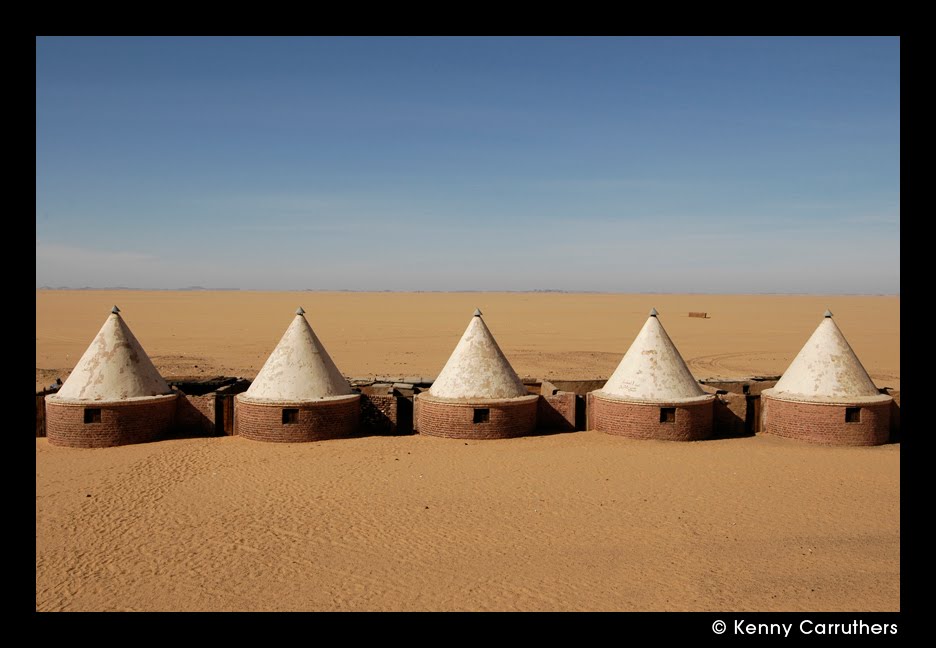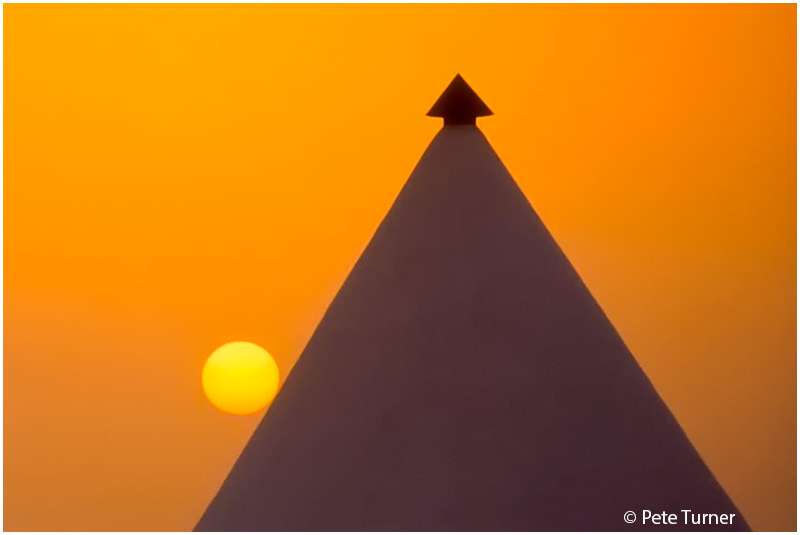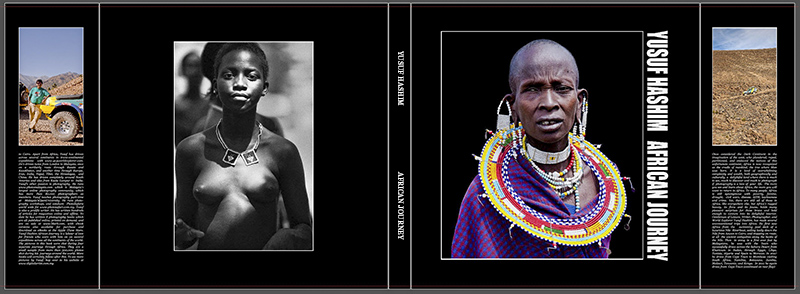Written by Yusuf Hashim a.k.a. Digitalartist a.k.a.Spider
Rolling Ball is one of Pete Turner’s most iconic photos. Pete Turner shot his Rolling Ball in 1959, deep in the Bayuda Desert of Sudan, a location I have also been privileged and blessed to have visited and shot. When I was there in 2004, I had not yet seen Pete Turner’s photo. There was a setting sun as well, albeit a little low below the horizon when I passed the location. Even if it was in the right position, most of us, me included, probably would never have seen in our mind’s eye, what Pete Turner saw and shot. Its a valuable learning experience for us, about how the minds of great photographers work. Hope everyone will learn something from Pete Turner’s Rolling Ball.
The picture below was shot by me in the Bayuda Desert of Sudan on 31st September, 2004, somewhere between Abu Hamed and Wadi Halfa. I was on an epic drive across the Sahara Desert of Sudan, Egypt, Libya, Tunisia and Algeria, to Casablanca in Morocco, with the Petronas Adventure Team. Petronas was making some very significant investments in the Oil and Gas sectors of Sudan and Libya, and their sponsorship of the series of Petronas 4×4 Driving adventures around the world, was a Malaysian flag waving exercise in those regions. I paid only around RM20K to suffer in the desert, and be a part of the team, by co-driving the Toyota Landcruiser of another participant for almost 60 days. We drove through huge sandstorms and giant dunes. We camped in the desert. We ran out of water on one occasion, and out of fuel on another, when a pre-arranged fuel drop didn’t materialize. We went without a bath for days on end. We got cooked by the sun, and froze at night. But it was an adventure of a lifetime that I could never have experienced travelling on my own. So I was grateful. It was dusk when I shot this photo, and the sun was just beginning to descend below the horizon. The thick dust in the desert air transformed the low sun into a blazing crimson ball of fire. Truly a sight to behold and an unforgettable experience…

Sunset in the desert, shot through the windscreen of a Toyota Landcruiser, on 31 Sep 2004, with one hand holding an old EOS 10D, and my other hand on my steering wheel.
If you squint and you look hard enough at the horizon, you’ll see some telephone lines on poles. These telephone lines were in fact laid beside a railway track leading to a remote abandoned railway station between Abu Hamed and Wadi Halfa in Sudan. And I shot the photo below through the window of my speeding truck. I was attracted to the conical structures on the roof of the railway station building. It seems they were made conical so that desert sand from the frequent sandstorms there, would simply slide down the slope. And they did double duty as a chimney and ventilation hole as well, through which desert sand wont fall into. I know photos shot through the window of a speeding vehicle can never be good. I call them stolen photos because we were not allowed to stop and shoot at our own whims and fancy, partly because we were in strict convoy formation for security purposes, and partly because in the desert, to stop can sometimes get you bogged in the soft sand.
I didn’t think much of this photo of mine, until I came across some research done by Eric Meola about where Nat Geo Photographer Pete Turner, more than half a century earlier, had shot his iconic Rolling Ball photo. Meola and famous aerial photographer George Steinmetz confirmed that an almost similar photo to mine, shot by one Kenny Carruthers two years later in 2006, was indeed the location where Pete Turner had shot his photo. When Pete Turner passed this location in 1959, there was only one conical structure. Now there are six. Kenny Carruthers photo of this location is extracted from his Flicker account and reproduced below:

Railway Station # 16, shot by Kenny Carruthers in 2006, two years after my photo of the same location, shot in 2004.
And this is Pete Turner’s iconic Rolling Ball, a source of much learning about the mind of a good photographer. When most of us see conical , or triangular structures as in my photo, and Carruthers photo above, would we have been capable of visualizing a composition such as the one Pete Turner shot? Probably unlikely. That’s why we are us and Pete Turner is a Nat Geo Photographer. We can try and learn from great Photographers like Pete Turner.

Rolling Ball by Pete Turner, is now in the permanent collection of the International Museum of Photography at George Eastman House, Rochester, New York. It is one of Pete Turner’s best known photos. It is a sunset photo like no other. When we shoot pictures, our goal should be to try and shoot thinking pictures like this, driving home the point that shooting sunrises and sunsets is not simply about shooting the sun and a colourful sky. Check out Pete Turner’s Book, African Journey, about his epic 7 month journey across Africa in 1959.
In 1959, Pete Turner was near the end of his epic 7 month journey in an Airstream Trailer, transecting Africa from Capetown to Cairo. Turner was on his first assignment for National Geographic. He saw the conical structure of Railway Shack #16 in the middle of the Nubian Desert, and he placed the triangle of the roof structure, within the rectangle of his camera’s frame, adding the third element of geometry, the circle, by placing the sun right at the edge of the triangle, so that the sun appears to be rolling down the side of the roof. Turner’s title, “Rolling Ball” of course completes the illusion.
When Turner returned to the US, his Rolling Ball became part of the George Eastman Kodak collection. It made Turner famous, and he went on to shoot more amazing pictures in a long career with National Geographic. Pete Turner is a pioneer and a master of colour using film media. If you can, try and get a copy of Pete Turners Book, Pete Turner – African Journey. It has amazing photos inside.

Pete Turner’s Book, African Journey is well worth buying. Pete was a pioneer in the use of colour with film during the time when Black and White was still the preferred medium for photos back in the early Fifties and Sixties
When Turner returned to the US, his Rolling Ball was acquired by the George Eastman Kodak collection. It made Turner famous, and he went on to shoot more amazing pictures in a long career with National Geographic. My claim to fame is that I have also done a similar drive across Africa like Turner, not once, but four times. Unfortunately, the quality of my photos will never ever be like his. Striving to be a better photographer, and studying the work of past masters, I believe, is what keeps us progressing up the learning curve.
Click HERE to check out my unabashed copycat version Yusuf Hashim – African Journey, a book I wrote two years ago, about my own drives across Africa in 2003, 2004, 2008 and 2011. The flysheet of the book is reproduced below. Published online and printed on demand.

My Coffee Table Book, Yusuf Hashim-African Journey, about my 4 journeys across Africa, from Cape Town to Casablanca in 2003, 2004 2008 and 2011. Published privately and printed on demand.
This is the Foreword Page and a map of the routes I drove across Africa.




